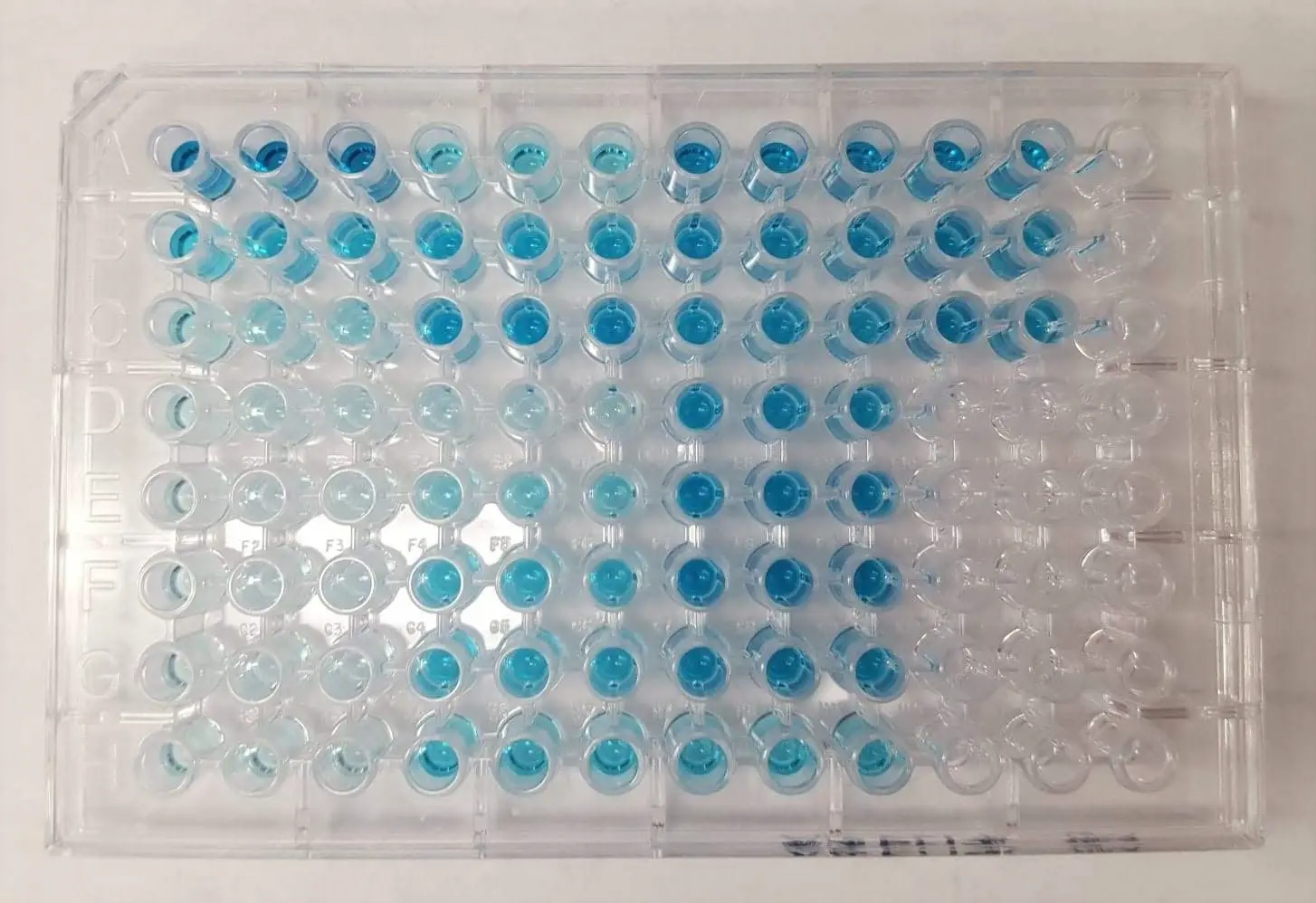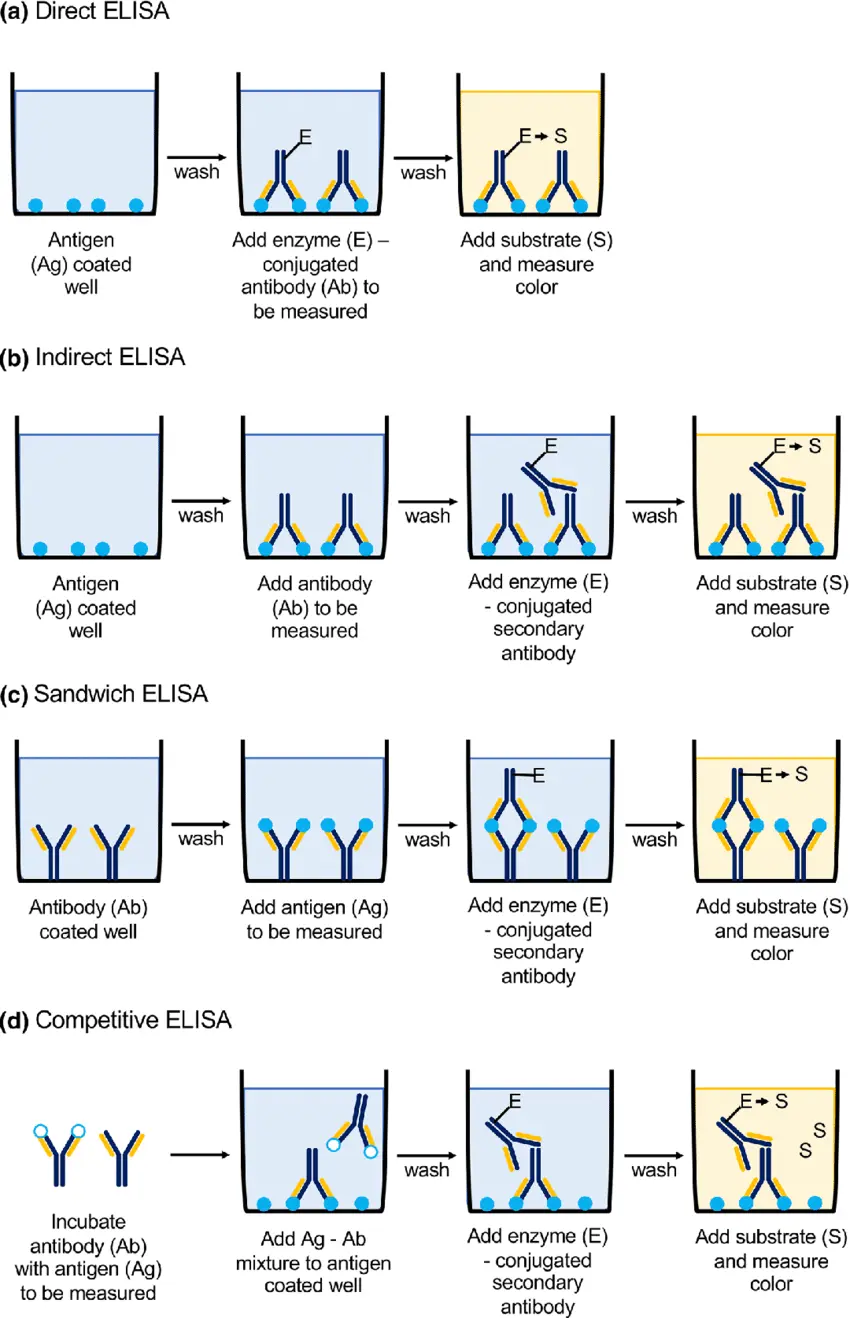Introduction
The Enzyme-Linked Immunosorbent Assay (ELISA) is one of the most essential and widely used immunological techniques in biomedical research and diagnostics. It allows scientists to detect and measure specific proteins especially antibodies and antigens in complex biological samples with high sensitivity and specificity.

What Is ELISA?
ELISA is a plate-based assay that combines the specificity of antibodies with enzyme-mediated signal amplification to detect target molecules. It plays a critical role in immunology and clinical diagnostics by providing quantitative data on protein presence and concentration.
Types of ELISA
- Direct ELISA: The antigen is immobilized on the plate, and a labeled antibody directly binds to it. This method is quick but less sensitive.
- Indirect ELISA: Uses an unlabeled primary antibody and an enzyme-conjugated secondary antibody to amplify the signal, improving sensitivity.
- Sandwich ELISA: Captures the antigen between two antibodies (capture and detection antibodies). It is highly specific and suitable for complex samples.
- Competitive ELISA: Measures antigen concentration by competition between the sample antigen and a labeled antigen for antibody binding.
How ELISA Works: Step-by-Step
- Coating: Wells of a microplate are coated with an antigen or antibody specific to the target protein.
- Blocking: Non-specific binding sites are blocked with a protein solution to prevent background noise.
- Sample Addition: Samples containing the target molecule are added, allowing binding to the coated antibody or antigen.
- Detection: An enzyme-linked antibody binds to the target molecule.
- Substrate Addition: The enzyme reacts with a chromogenic substrate, producing a measurable color change.
- Measurement: Optical density (OD) is read using a spectrophotometer; intensity correlates with protein quantity.
Applications of ELISA in Antibody Research
- Quantifying antibody levels in patient serum or experimental samples.
- Detecting pathogens or biomarkers in clinical diagnostics.
- Monitoring immune responses during vaccination or infection.
- Validating antibody production and purity in biotechnology.
- Screening therapeutic antibodies for research and development.
Practical Tips for Successful ELISA
- Always include positive and negative controls to validate results.
- Use fresh reagents and substrates for consistent performance.
- Optimize antibody concentrations and incubation times.
- Perform thorough washing steps to minimize background noise.
- Validate your antibodies for specificity before use.
Conclusion
ELISA is an indispensable tool for antibody research, combining precision, sensitivity, and versatility. Mastery of this technique opens the door to detailed analysis of immune responses, disease biomarkers, and therapeutic antibody development.
